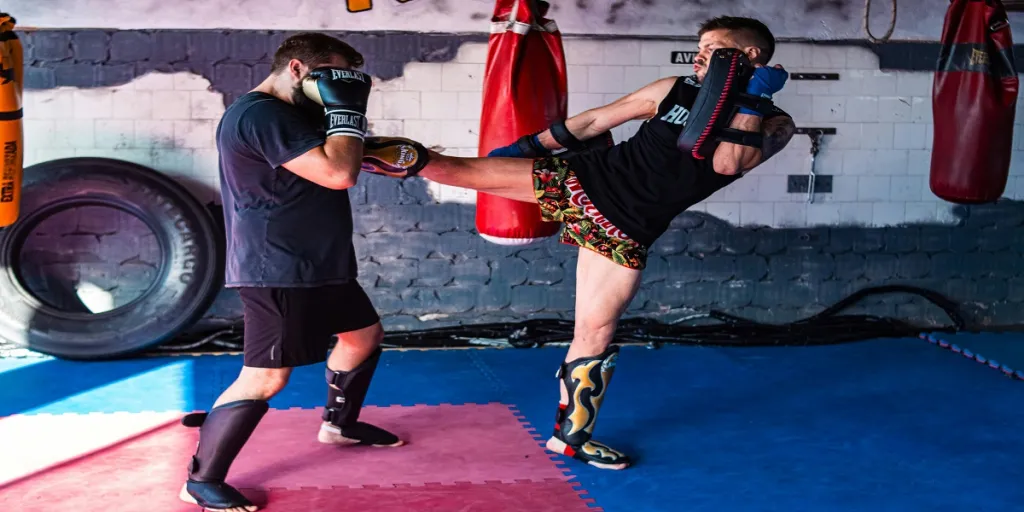While many of us view exercise as a critical activity to improving our health, fewer may describe our sports pursuits as ‘practical’ or ‘useful’ in our everyday lives. There is, perhaps, one notable exception: martial arts.
In fact, the history of martial arts can be traced back to as far as 300 BC, more than 2,000 years ago, helping it to become one of the most traditionally well-received, globally recognized sports. Naturally, from a wholesaler’s perspective, this indicates a substantial customer base and expansive market waiting to be tapped into.
Below we’ll take a look at the market potential of martial arts training equipment, and the considerations wholesalers should take into account when sourcing martial arts training equipment in 2023.
Table of Contents
Martial arts equipment market summary
Types of martial arts training equipment
Martial arts training equipment worth exploring in 2023
Conclusion
Martial arts equipment market summary
The global martial arts market is recognized as a fast-growing industry valued at US $90.25 billion in 2020. Experts predict that this figure will surge to US $171.14 billion by 2028.
The expansion rate of the martial arts schools or martial arts studio industry in the United States provides a clue as to its growing popularity. Statista data shows that as of 2020, there were about 39,310 martial arts establishments operating in the U.S., a notable 6.32% growth from the previous year’s 36,970 businesses. Furthermore, the sector was at that time expected to grow to 50,490 businesses by the end of 2022, a more than 28% increase compared to 2020.
These figures outline promising prospects for the martial arts industry worldwide. With this in mind, it’s time to evaluate which equipment wholesalers are most likely to profit from in 2023.
Types of martial arts training equipment
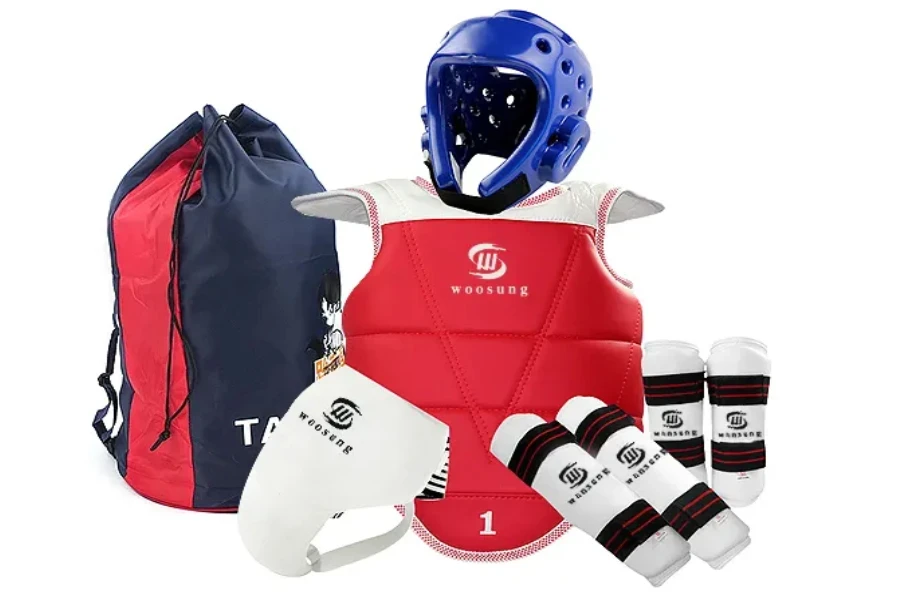
As with many other industries, it is critical for wholesalers to balance their product selection criteria with factors prioritized by end users in order to successfully identify which products are worth pursuing.
From the perspective of the end user, which training equipment they choose is primarily influenced by the martial arts disciplines they adopt, as different disciplines emphasize different specific types of equipment. The user’s skill level is another factor that is also highly relevant to selection.
Generally, the lower a person’s skill proficiency, the simpler the training equipment. Disciplines and skill levels aside, quality and durability are also important features for martial arts equipment, as it is often subject to intense training and usage.
Wholesalers may therefore want to source martial arts training equipment based on relevant market demand research, identifying respective types of equipment alongside related cost-effectiveness. For example, Yelp data indicates that boxing, Brazilian jujitsu, karate, and taekwondo are among the most popular martial arts disciplines in the U.S. This can help wholesalers pinpoint the types of martial arts disciplines they will want to focus on.
Martial arts training equipment worth exploring in 2023
Uniforms
Uniforms of different martial arts disciplines show great potential to wholesalers. Google Ads keyword analysis reveals that “martial arts uniform” has not only consistently averaged over 300 searches per month for the past 12 months, but also has a ‘high’ competition index of 99 (on a scale of 0-100).
Last month, the search volume saw an uptick of about 100, bringing the total close to 500, making it both a high-demand and highly competitive keyword. Although uniforms might not technically be categorized as typical martial arts training equipment, their function as a protective layer provides the foundation that differentiates all martial arts styles and are of significant value to any martial arts training journey.
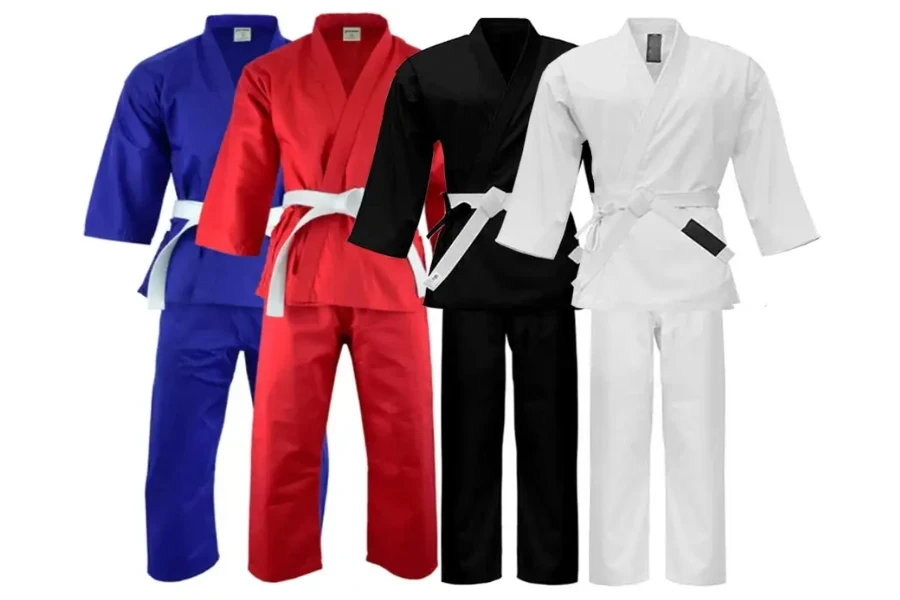
From the top martial arts disciplines listed above, for example, Brazilian jujitsu gi (also known as kimonos) are required by its practitioners, except for those of the “no gi” disciple, who instead wear rash guards and shorts.
It is worth noting that while Brazilian jujitsu evolved from Japanese judo and jujitsu, its uniform is different from that of a judo gi. Brazilian jujitsu gi, for example, come with narrower jacket and pants cuffs to minimize the opponent’s ability to get a grip.
Wholesalers intending to stock uniforms market of karate and taekwondo will too want to research the differences, as each school, style, or branch has its own idiosyncracies. Fortunately, most experienced karate uniform (karategi) manufacturers will be flexible enough to provide fully customized options, including both color and logo customization.
Similarly, most seasoned, taekwondo dobok suppliers will understand the differences between ITF (International Taekwondo Federation) and WTF (World Taekwondo Federation) style uniforms, often specializing in one or the other.
Protective gear
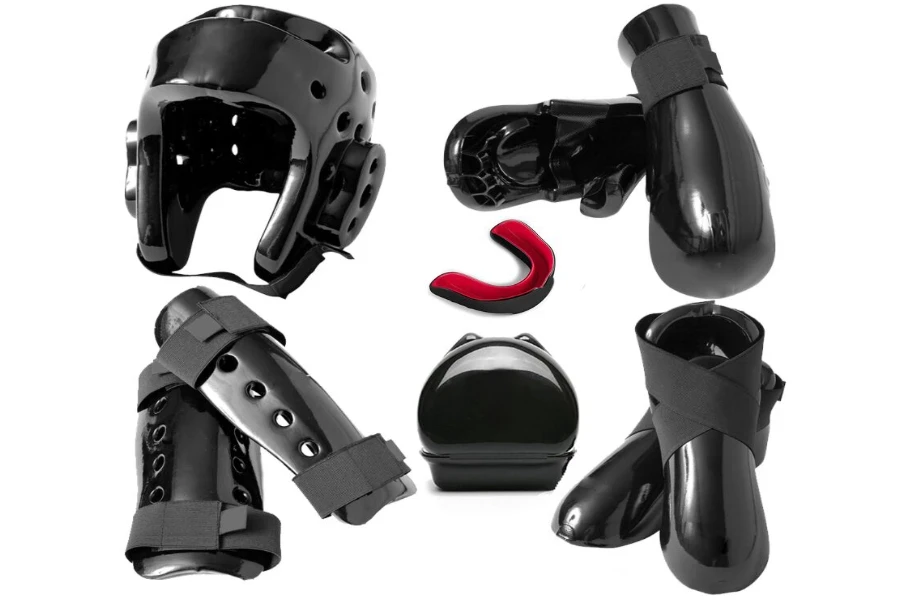
The importance of utilizing the appropriate protective gear in martial arts training cannot be stressed enough. Unlike martial arts uniforms, which are strictly dependent on designs and their authenticity relating to different martial arts disciplines, protective gear relies on the strength of the product.
“Martial arts protective gear,” especially keywords such as “shin guard” and “chest guard,” shows a consistently ‘high’ competition level, with index levels ranging between 95-100, according to Google Ads. In addition, “karate shin guard,” saw more than 100 searches, twice its usual amount, in the first half of September.
Leg guards are generally a universal piece of martial arts protective gear and come in various sizes suitable for both men and women.

Leather chest guards may also be used, shielding its wearer from potential chest, rib, or even abdomen injuries during training or sparring thanks to thick, multi-layer foam cushions.
Other gear is designed to suit the specialized needs of different martial arts disciplines. For example, head guards, are particularly important in taekwondo, where head-level kicks are incentivized with higher scores.
In karate, meanwhile, gloves are important because hand strikes are central to the discipline and therefore expose the hands to a higher risk of injury.
Training accessories
Training accessories are another integral part of a comprehensive martial arts regimen. Based on Google Ads, essential training accessories, such as personalized wearable gear like kicking shields and foundational items like floor mats, both exhibit a ‘high’ competition level, with indexes scoring between 98 and 100. Both have also experienced a surge in search volume recently, with the former seeing a 23% rise, increasing by 40 searches, while the latter saw a 30% surge, increasing by 300 searches over the past two months.
Interlocking foam floor mats, which is often made from ethylene-vinyl acetate (EVA) foam, is an example of a useful training accessory when it comes to safe martial arts practice. They provide a shock-absorbing, cushioned surface for training, which is particularly useful during throw practice and grappling.
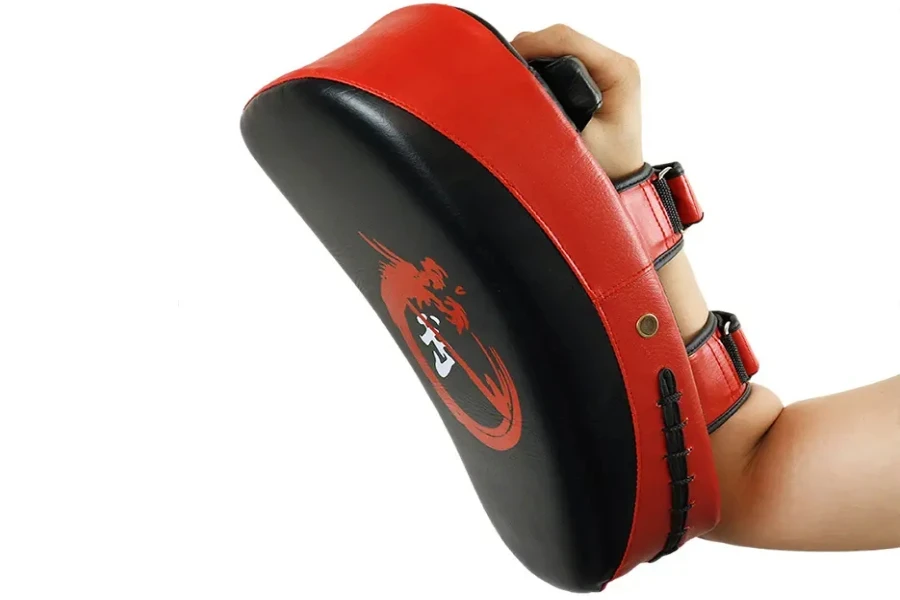
Focus mitts, or training pads, are another important training accessory that is used to practice sparring. They provide a dynamic form of feedback to help develop striking skills.
Similarly, kicking pads or larger kicking shields are what martial artists normally rely on to hone their kicking precision, speed, and skill. These accessories also serve as a critical tool during sparring by providing a practical target for responsiveness practice in combat scenarios.
Conclusion
The global martial arts training equipment market has experienced a steady rise over the past few years. Practitioners look for equipment that adheres to their specific discipline’s guidelines, alongside quality and durability.
Wholesalers, meanwhile, will want to understand market demands, cost structures, and the diverse training equipment options available when sourcing the right martial arts training equipment for them. Popular forms of martial arts equipment continue to be protective gear, uniforms, and essential training accessories such as mats and kick pads, all of which can be found on Alibaba.com.
In the meantime, for additional business insights and innovative sourcing ideas, head to Alibaba Reads.
